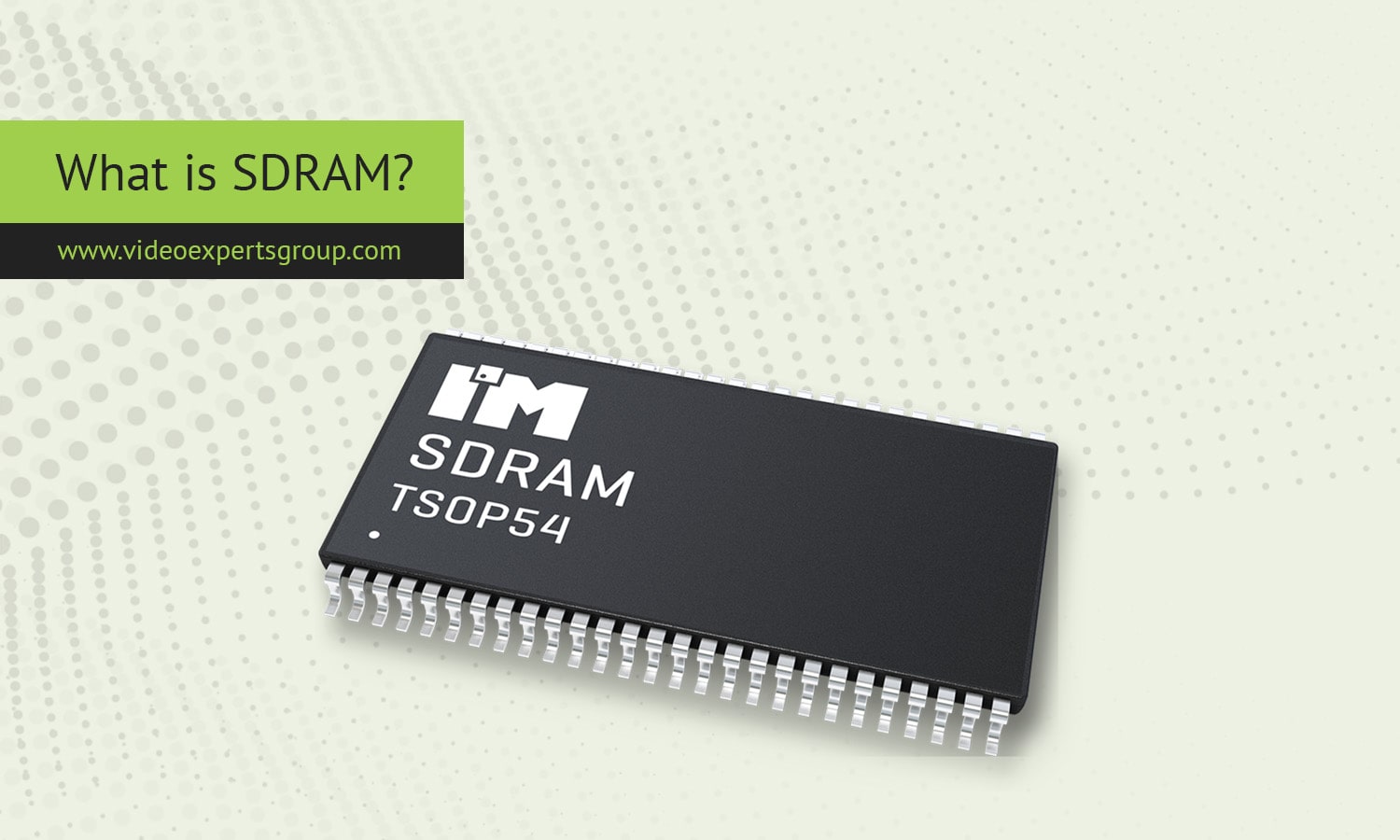Synchronous Dynamic Random-Access Memory (SDRAM) is a type of memory commonly used in computers and other digital devices for high-speed data processing. It operates in synchronization with the system's clock, allowing it to transfer data more efficiently than earlier forms of DRAM. SDRAM has revolutionized memory performance by aligning its operations with the processor's clock cycles, making it a fundamental component in modern computing systems.
Meaning
SDRAM stands for Synchronous Dynamic Random-Access Memory. "Synchronous" means that the memory’s operations are coordinated with a clock signal, allowing it to perform tasks at specific, timed intervals. This feature contrasts with older asynchronous DRAM, which operates independently of the system clock. The "dynamic" part of SDRAM refers to its use of capacitors to store data, which must be refreshed periodically to prevent the data from being lost. Despite needing frequent refresh cycles, SDRAM's synchronized nature enables faster and more efficient data access compared to its predecessors.
What is SDRAM used for?
SDRAM is primarily used in computers and electronic devices to store data that is actively being used or processed. Common applications of SDRAM include:
-
System RAM (Random-Access Memory) in Computers:
SDRAM is commonly found in desktop computers, laptops, and servers as the main memory. It stores temporary data that the processor needs for running applications and performing tasks. -
Graphics Processing Units (GPUs):
SDRAM is often used in GPUs to handle rapid calculations related to rendering graphics. This type of memory ensures smooth video playback and gaming experiences by providing fast data access for graphical computations. -
Gaming Consoles and Embedded Systems:
In gaming consoles and embedded systems, SDRAM stores instructions and game data, ensuring quick access for real-time gaming performance. -
Networking Equipment:
Devices like routers, switches, and network-attached storage (NAS) also use SDRAM to manage data packet buffering and ensure efficient data transfers across networks. -
Mobile Devices:
SDRAM can be found in smartphones and tablets, where its speed and efficiency improve overall system performance, especially in handling multitasking and resource-heavy applications.
How does SDRAM work?
SDRAM operates by synchronizing its tasks with the clock cycles of the system's processor. This coordination allows it to access, read, and write data more quickly and efficiently than asynchronous memory types. Here’s a simplified breakdown of how SDRAM works:
-
Clock Synchronization:
SDRAM is synchronized with the system clock, meaning it follows the same timing as the processor. This synchronization allows the memory to execute commands at specific intervals, reducing latency and improving performance. -
Memory Banks:
SDRAM is divided into multiple memory banks, allowing it to access more than one piece of data simultaneously. These banks operate independently of each other, which helps the processor retrieve data faster by accessing different banks in parallel. -
Pipelining:
One of SDRAM’s key features is pipelining, which means that while one command is being executed, the next command is already being prepared. This overlapping of tasks significantly improves the overall data throughput, allowing more instructions to be processed in a given period. -
Refreshing Data:
Like all dynamic memory, SDRAM stores data in tiny capacitors, which slowly lose their charge over time. To prevent data loss, SDRAM must regularly refresh the data by recharging these capacitors. This refresh cycle happens automatically and does not interfere with the overall speed thanks to the synchronization with the clock. -
Burst Mode:
SDRAM supports a feature called burst mode, which allows it to retrieve or store a sequence of data in rapid succession after the initial memory access. This reduces the time needed to access large blocks of data and improves memory efficiency.
Advantages and Disadvantages
Advantages of SDRAM:
-
Higher Speed:
One of the main advantages of SDRAM is its high speed, achieved through synchronization with the system clock and its ability to process data in parallel across multiple memory banks. This makes it faster than older forms of DRAM, such as FPM (Fast Page Mode) or EDO (Extended Data Out) DRAM. -
Pipelining and Burst Mode:
The pipelining and burst mode features allow SDRAM to process multiple commands simultaneously and access blocks of data quickly, which boosts overall system performance. -
Improved Data Throughput:
By aligning its operations with the system clock, SDRAM achieves better data throughput and reduces bottlenecks in the memory access process, making it more efficient for handling intensive tasks like gaming, video editing, and multitasking. -
Lower Latency in Data Access:
Due to its synchronization with the clock signal, SDRAM is able to reduce the delay, or latency, in accessing data. This improves the responsiveness of a system, especially during resource-demanding activities like gaming or running multiple applications simultaneously.
Disadvantages of SDRAM:
-
Higher Power Consumption:
SDRAM consumes more power compared to some other memory types, particularly when actively refreshing data and processing multiple tasks simultaneously. This can lead to higher energy consumption, especially in large-scale systems like servers. -
Requires Refreshing:
Being a dynamic memory type, SDRAM needs to be refreshed periodically to retain its data. While this does not significantly affect performance, it does increase complexity in design and power usage. -
Limited Scalability for Modern Systems:
SDRAM has largely been replaced by more advanced memory technologies like DDR (Double Data Rate) SDRAM, which offer even higher speeds and better power efficiency. As a result, standard SDRAM is now considered outdated for high-performance computing needs. -
Complex Design:
Due to its synchronous nature and the need to work with the system clock, SDRAM has a more complex architecture compared to older asynchronous memory types. This complexity can make it more challenging to design and implement in systems.
FAQ
Synchronous Dynamic Random-Access Memory (SDRAM) is a high-speed, clock-synchronized memory type that significantly improves data access efficiency in computers and other digital devices. Its pipelining, burst mode, and clock synchronization features make it faster than older DRAM types, although newer technologies like DDR SDRAM have largely taken its place in modern computing systems.
















